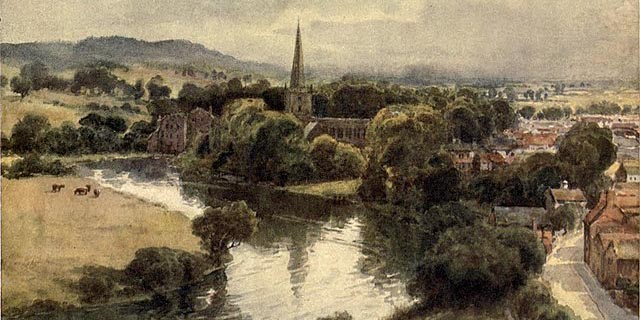
by Adam Hansen

I got a post-‘lockdown #3’ haircut in my Tyneside town recently, to my relief, and everyone else’s. (You know things are getting desperate when 90% of what anyone sees onscreen in a Zoom call is not your face, but an unruly mop). In the queue, I got talking to a retired white guy about Covid (what else?). Eventually, conversation moved on to him wondering why the virus was so prevalent among what he called ‘ethnics’. I said something about the fact that so many BAME individuals work in front-line, high-risk jobs. On reflection, I should have said something about the fatal impact of structural, institutional issues, and health inequalities more generally, as others have.
On reflection, again, was my fellow queuer being racist, or was he trying to find the right word to describe folk that people in his generation might have called something else? What was clearer, yet still curious though, was the idea that an ‘ethnic’ was someone he wasn’t. In other words, as a white man speaking to another white man, his ethnicity was invisible, not in question, or in focus.
Cut to me, 20 years ago, leafleting against the far-right British National Party in the suburbs of Leeds and Bradford one weekend. A guy in his front garden thought I was doing the opposite. When I explained, he wondered why someone like me who looked like him – white, from Yorkshire, and with a very short haircut at that point – wasn’t supporting the BNP. I said something about my background, as the son of parents whose families had been both ‘economic migrants’ and refugees, and about the way race is used to turn working-class people against each other. He promised to wave at me from the other side of the road the next time the BNP were marching in town. Again, it was curious that any complexity in my ethnicity was invisible, and my ethnicity only mattered insofar as I wasn’t obviously non-white – clearly, white meant white, and that was that.
These exchanges might seem a world away from what I and others have tried to do in Shakespeare in the North, a collection of essays about how Shakespeare represented the ‘north’ and how the ‘north’ has represented him. But they aren’t. Shakespeare in the North begins with an epigraph adapting a racist slur, a slur used not simply to describe non-white ‘others’, but also all people north of London (which clearly does also include ethnically and racially diverse ‘others’). But, as I set out in the introduction to the collection, the ‘north’ (variously defined) has been marked as ‘other’ and foreign to some model of ‘Deep England’ for many years.
This is why Shakespeare and the ‘north’ have often been seen as incompatible (and why what is known as postcolonial theory informed how the collection worked). If northern places are not really part of the nation for which Shakespeare is supposedly the designated laureate, how can they go together? Shakespeare has, of course, often been used to help people work out what a nation – including England, Scotland, Ireland, Wales, ‘Britain’ and beyond – means. But when we read Shakespeare closely, we see he spends as much time complicating the idea of a nation as he does constructing it. This means that if the ‘nations’ we see in Shakespeare, and which he and we inhabit, aren’t as coherent or certain as we might think, then neither, perhaps, are the racial or ethnic identities with which some people assume particular places are associated. In other words, when we question the integrity of a nation, by looking at its histories, plural regions, and contested borders, we also query the apparent essences of the racial and ethnic identities ‘supposed’ to be there (or not).
I’m far from the first to note this, especially since the Black Lives Matter movement has resonated all over the world, in many contexts – including in the study of Shakespeare. People like Professor Ayanna Thompson have cross-fertilised critical race studies with teaching Shakespeare to show how his work helps us to think about ‘race before race’. This means we see better how ideas about race and ethnicity change, yet have been and still are used to create injustice, discrimination and exploitation. Thompson affirms that the complex skills we develop when reading and watching Shakespeare help us expose and challenge such conditions. Partly this is because, as we do, we also develop a critique and awareness of the conflicts and contradictions of ‘whiteness’ as much as the significance of ‘blackness’. In turn, we see that just as it is part of the ‘privilege’ of being a man for our behaviour to go ‘unexamined’, so it is part of the ‘privilege’ of whiteness to be invisible to those who embody it.
Doing this work has always mattered. But at a time when some claim institutional racism is apparently a myth little matters more, including getting a haircut.

About the Book
This exciting collection of original essays critically assesses the significance of locality in Shakespearean plays. Considering how Shakespeare and his contemporaries understood the ‘North’, it brings together diverse voices to define what the ‘North’ meant and means in relation to Shakespeare.

About the Editor
Adam Hansen is Senior Lecturer in English at Northumbria University. He is the author of Shakespeare and Popular Music (Continuum, 2010) and co-editor of several collections, including Shakespearean Echoes, with Kevin J. Wetmore, eds. (Palgrave, 2015) and The White Devil: A Critical Reader, with Paul Frazer, eds. (Bloomsbury, 2016).
Did you enjoy this blog? Check out more like it here.




